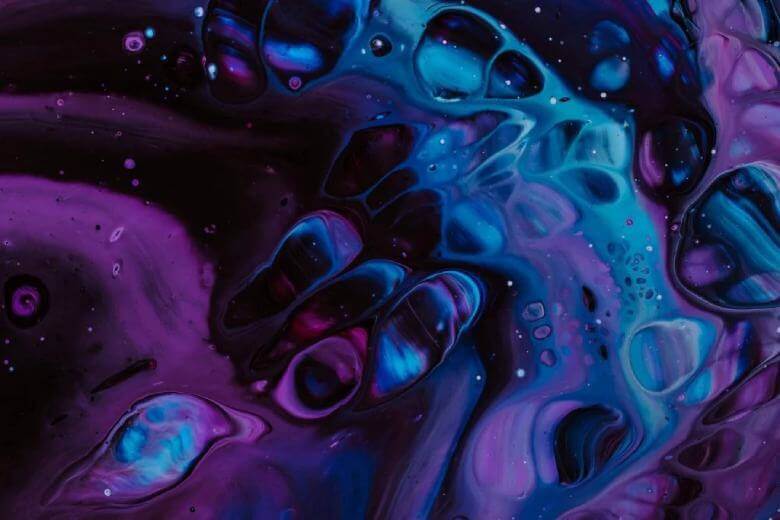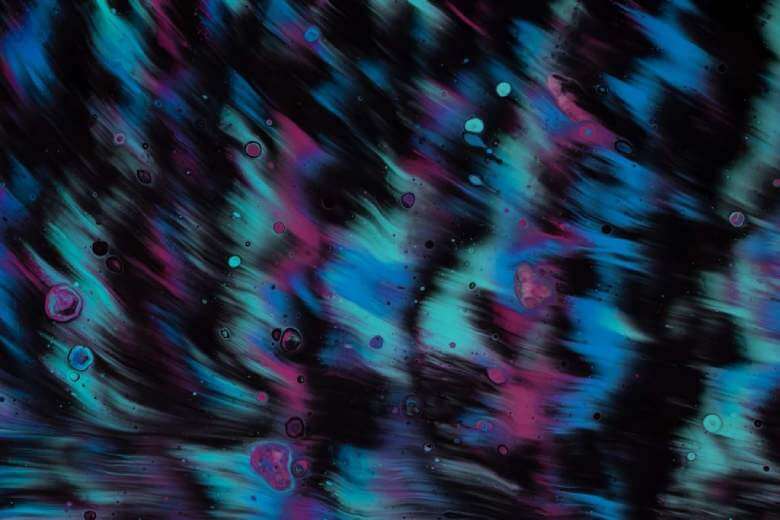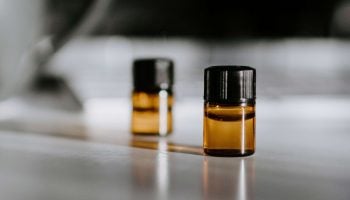You’ve heard about how microdosing LSD, or lysergic acid diethylamide, is helping people heal from poor mental health or how a single LSD-inspired mystical experience can have powerful positive effects that last decades afterwards. Maybe you’ve felt called to Third Wave’s Microdosing Course, or maybe you were blown away by books like LSD and the Mind of the Universe and How to Change Your Mind.
The transformative power of psychedelics is calling your name. It’s pulling on your heart. You’re excited, a little nervous, and you want in. But you’re also a project manager at a respectable finance company. Or a healthcare worker. Or a server at an upscale hotel.
Point is, you work in an industry that contains drug testing as part of the job, either as a pre-employment drug screening or a random test. Despite the appeal of LSD, these drug tests make you apprehensive of LSD’s biggest risk: illegality.
While we at Third Wave don’t encourage illegal activities, our mission is to share trusted, research-based content that helps you feel safe, supported, and empowered as you follow your path towards personal transformation.
So. Immunoassays and liquid chromatography–mass spectrometry? Urine and blood? Cross-reactivity and false-positives? Let’s get into it.
Drug tests: laws, types, and accuracy
Since the United States each have the ability to make their own laws about drug use (we see you California and Oregon), it makes sense that states also have the ability to make their own laws about drug testing. For a truly accurate understanding of how drug tests work, the first step would be to check your state laws. The one general rule is that, out of the four human specimens collected for drug testing—urine, blood, hair, and saliva—all federally regulated programs must use urinalysis, or a urine test.
To test all types of specimens, two different methodologies are used: point-of-collection immunoassays and laboratory spectrometry tests.
Point-of-collection immunoassays are tests that can be conducted onsite without the specimen, or drug sample, needing to be sent to a lab. An immunoassay works by using antibodies to detect the presence of a corresponding analyte (bit of a molecule) in a drug sample. If an analyte is detected, enzymes will form, and the specimen sample will change color proportionally to the amount of enzymes that form.
More enzymes = darker color change = more of the drug in the sample. At a certain cut-off point, there is “enough” of the drug in the sample for the test to return as positive. Immunoassays like this only return a positive or negative result. This is also how pregnancy tests work.
Generally, the cut-off point is set to the lowest concentration of the drug that can be accurately detected after consumption. In other words, point-of-collection tests are maximally sensitive, which can often cause false-positive results, or results that claim the presence of a drug when there is none. In addition, different manufacturers set different cut-off points, and these tests often can’t distinguish between drugs that are unrelated but chemically similar or even drugs of the same class.
In other words, immunoassay drug tests frequently need back-up.
When drug samples are sent to the lab, usually two types of high-tech equipment are used to provide a more accurate analysis: gas chromatography–mass spectrometry (GC-MS) and liquid chromatography–mass spectrometry (LC-MS/MS). One study published in the Journal of Analytical Toxicology found that LC-MS/MS was less expensive, more accurate, and more able to detect key metabolites, or the byproducts of a drug after it’s been metabolized by the body.
A standard macrodose of LSD is 200 micrograms (ug), which is 0.2% of a standard dose of MDMA and 0.005% of a standard dose of dried psilocybin mushrooms. Because it’s consumed in such small amounts, LSD must be tested in a lab and, for this reason, most common drug tests don’t screen for LSD (or many other hallucinogenic drugs for that matter).
The five most common categories of drugs that are tested are drugs of abuse, like amphetamines (meth, MDMA), THC (cannabis), cocaine, opiates (heroin), and phencyclidine (PCP).

How LSD moves through the body
When a full dose is taken orally through blotter papers or gel tabs, LSD is absorbed by the digestive tract and processed by the liver. It then makes its way into your bloodstream until it travels across the blood-brain barrier into your brain.
This entire process takes about 30-45 minutes, and it’s the period of a journey where many people experience fluctuations in body temperature and heart rate, along with a loss of appetite. LSD’s hallucinogenic subjective effects kick in noticeably about an hour after ingestion and they last for six to 12 hours.
Interestingly, LSD’s half-life, or the amount of time it takes for half of the ingested amount to exit the body, is only a little more than three hours. This means that the majority of the 12-hour-long—sometimes 16-hour-long—LSD experience is being sustained by less than half of the original ingested amount.
Said another way, LSD is one powerful molecule.
How long does LSD stay in the body?
Urine test
A urine drug test is the least expensive and most reliable collection method, so it is the most commonly used. LSD can be detected in human urine from two to four days after ingestion.
However, only 1% of the ingested LSD makes it out of the body through urine as the complete LSD molecule. The remaining 99% comes in the form of metabolites, which essentially means that using a point-of-collection immunoassay test to detect LSD in urine is like trying to find a needle in a haystack.
This is why more extensive tests like LC-MS/MS are needed, because they have the capacity to detect metabolites. If a urine sample is sent to the lab, then technicians usually look for a metabolite called 2-oxo-3-hydroxy-LSD, or O-H-LSD. Researchers from the University of Basel found that O-H-LSD makes up 13% of the administered LSD and O-H-LSD remains in urine for longer than the LSD molecule, although it is uncertain as to how much longer.
If you love long chains of numbers and letters, then you’ll appreciate knowing that the 99% LSD metabolite soup contains five major metabolites: O-H-LSD, N-demethyl LSD (nor-LSD), 2-oxo-LSD, 13-hydroxy-LSD, and 14-hydroxy-LSD.
Blood test
A blood drug test is expensive and the most invasive, so it is generally the least common collection method. However, for the detection of LSD, it joins urine as a very reliable testing specimen. LSD can be detected in human blood for six to 12 hours after ingestion.
One study found that blood concentration of LSD was proportional to the amount taken. LSD could be detected for up to eight hours in healthy subjects who took 100 ug and up to 16 hours for subjects who took 200 ug. However, there is not enough evidence to call this proportional doubling of detection time a definitive pattern.
As for metabolites, LC-MS/MS can detect O-H-LSD in blood, but not very consistently—the aforementioned University of Basel researchers could detect it in only half of their subjects.
Hair test
There is a Mexican candy called Pelon Pelo Rico, where spicy tamarind goodness is pushed through a tube and out of a grated opening, producing spaghetti-like strands of hair-candy.
This is more or less how drugs enter the hair: drugs circulate the system and are pushed into the hair shafts through capillaries at the root or from secretions of sweat glands on the scalp, where they can remain for up to six months. Hair’s ability to retain drugs makes hair drug testing a viable option for determining long-term drug use.
However, hair drug tests are not a very viable collection method for LSD. One study in Japan found LSD in the hair of only two out of 17 subjects, and another study in Germany found LSD in the hair of only one out of 11 of their subjects.
Saliva test
As of May 2021, there is no published research on saliva drug tests for LSD.
Saliva tests are easy to obtain, involving a swab in the month that is then placed in a solution. However, it is easy to contaminate samples. In general, most substances disappear from saliva within 12-24 hours.

Factors that affect how long LSD stays in your system
To review, the detection times for LSD in the four specimens considered here are, in order of shortest to longest, eight to 16 hours for blood, 12-24 hours for saliva, two to four days for urine, and up to six months for hair.
But there is a good reason why all of these times are ranges.
Because LSD arrives in a specimen through a metabolic process in the digestive system, factors that affect metabolism therefore affect the amount of LSD that shows up—and how long it shows up for. A study conducted in the 1970s showed that subjects who ate a full breakfast before a 100 ug LSD journey had LSD show up in blood plasma in decreased amounts and for less time than those who ate nothing at all.
More evidence is needed to say for certain what kind of effect different factors have on detection time but, in general, the following is a list of common factors that affect metabolism:
- Genetics
- Age
- Health
- Liver and kidney function
- Water intake
- Weight
- Taking other drugs
Other drugs that can show up as false positives
High cross-reactivity occurs when a drug test result shows up positive for a substance that is unrelated to the drug of interest yet is chemically similar. There are many drugs that can cause a drug test to return a false positive for LSD, including many antidepressants. Some drugs that cross-react are:
- Fentanyl
- Sertraline (Zoloft)
- Fluoxetine (Prozac)
- Haloperidol
- Amitriptyline
- Labetalol
- Imipramine (Tofranil)
How to get LSD out of your system
The quickest way to get LSD out of your system is actually a very complicated and nuanced process. It involves, well, discontinuing to take it.
Other than that, there is a common sense notion that drinking more water, eating healthy food, and exercising are all ways to flush LSD out of the body at a faster rate. Although these factors accelerate metabolism, there is no research that supports the claim that they also accelerate the rate at which LSD exits the body.
It would also make sense that taking LSD frequently, such as in a microdosing regimen, causes a buildup in the body, but a study published in the American Society for Clinical Pharmacology and Therapeutics refutes this idea.
Whether through macrodosing or microdosing, the positive effects of LSD are mitigating anxiety, inspiring creativity, and challenging the ubiquitousness of antidepressants. When done in the proper set and setting, the worst side effect of LSD may be the fear of losing your job to a drug test. As ever, the key is to act responsibly, display common sense, and carefully consider what risks you’re willing to take in advance.
Want to cut through all the fear surrounding psychosis, flashbacks, and “bad trips” that are sometimes associated with taking high doses of LSD? Learn how low doses of psychedelics can help you level up your life and improve well-being. Third Wave’s Microdosing Course uses the latest research from cutting-edge scientists and doctors, and helps you develop a customized, step-by-step process to change habits, enhance creativity, and optimize performance.
This blog article uses affiliate links. Third Wave receives a small percentage of the product price if you purchase through any affiliate links. Read our ethics and affiliates policy here.








LSD for schizoidaffective disorder